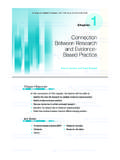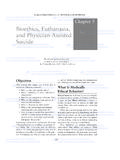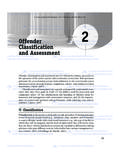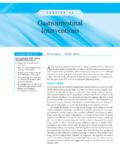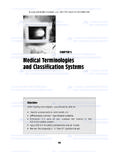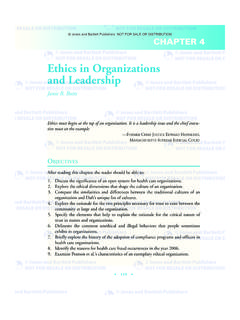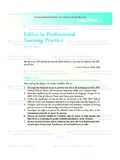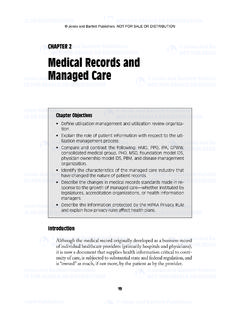Transcription of The Crime Scene - Jones & Bartlett Learning
1 The Crime Scene3chapterNo matter what the Crime or where the location, no two Crime scenes are ever the same. Each Crime Scene encompasses not only the geographic area but also persons and things. Protecting the area is pointless if what is contained within it is not also protected. The entryways and exits and travel routes to and from the Scene must similarly be guarded against contamination. The geographic area and the material objects within it usually can be secured easily. More difficult is preserving the people on the Crime Scene . Yet they must be preserved as meticulously as any other Crime scenes contain physical evidence, that is, evidence that can be touched, seen, or otherwise perceived using the unaided senses or forensic techniques. The difficult task is to determine what is evidence and what is not. However, it is better to process too much evidence than too little. Experience will help an investigator begin to pare down what is taken from a Crime Scene .
2 Each Crime has its own set of evidence parameters that help in distinguishing evidence from taken from the Crime Scene should be instrumental in discovering the facts. Keep in mind that the evidence reveals the facts; when the evidence is inconsistent with a hypothesis, the hypothesis must be changed to fit the evidence not the other way around. Numerous court cases have reduced the significance of suspects confessions and highlighted the key role of evidentiary corroboration. The importance of Crime Scene processing continues to increase. Not all evidence is recognized readily as such. Often, seemingly insignificant material left at a Crime Scene can increase in importance as the trial approaches or during the trial. The skills of the investigator may come into play anywhere or at any Crime Scene includes all areas through which the participants moved while entering to commit the Crime , while committing the Crime , and while exiting the Crime 44 STUDENT Learning oUTCoMESUpon completion of this chapter, students will demonstrate an understanding of: The responsibility of all the members of the Crime Scene team How to process Crime scenes big and small The use of templates and virtual photography in constructing Crime Scene sketches The importance of taking Crime Scene notes The importance of recording/documenting the Crime 315/19/08 8:23:32 AM Jones and Bartlett Publishers, LLC.
3 NOT FOR SALE OR DISTRIBUTION32 CHapTer 3 The Crime Scenescene. Generally the Crime Scene is a single well-defined area, but it may encompass sev-eral noncontiguous areas. Because most human activity takes place in sheltered places, the majority of crimes occur inside. Buildings and vehicles are the most common Crime scenes, and most Crime Scene processing involves these locations. However, as more and more people seek outdoor recreation, investigators will need to develop the ability to deal with outside Crime scenes as outdoor Crime Scene and the underwater Crime Scene require a redefinition of what constitutes a Crime Scene or secondary Crime Scene . People must get to wher-ever they are going outside, and they seldom walk. The roadways they drove, the areas adjacent to a Crime Scene that facilitate parking, and the pathways leading to and away from an exterior or underwater Crime Scene may contain evidence of that passage. In underwater recovery operations, dive team members may stage their equipment and seek access to the area to be searched with little consideration that the area over which they are walking is part of a Crime Scene .
4 They may begin their search activities walking around in hip-deep water, impervious to the fact that what they are walking upon may also be part of the Crime the Scene of a Crime is accomplished by recording each piece of evidence in relation to permanent non-evidentiary items at the Scene . The strategy is the same regardless of the location of the Crime Scene . Inside or outside, evidence must be recovered with some record of its relationship to the environment from which it was removed. Inability to demonstrate that relationship at the time of trial may prevent the evidence from being ResponseThe investigative team s most valuable investigative tool consists of the officers who arrive first on the Scene . Too often these officers are excluded from the investigative club, treated as underlings, and denied services and training that could increase the chance of investigative success. It is imperative that first-responding officers possess an under-standing of the investigative process, including a familiarity with and an appreciation for forensic evidence and its location, processing, and handling.
5 A telephone at a Crime Scene may be the most convenient phone to use, but getting to the phone and picking up the handset may destroy essential evidence. Ambling through the Crime Scene is preventable through education about the nature of the first-response of the Crime Scene will reduce Crime Scene contamination. All Crime scenes and all evidence retrieved from a Crime Scene could technically be considered CASE IN POINTS earching an Outdoor Crime SceneIn a search for a semiautomatic pistol in a man-made lake in Texas, divers laid down a tarpaulin and began unloading and stacking their air tanks, search ropes, personal flotation devices, wetsuits, and other dive-related equipment. Before they found the gun, divers using underwater metal detectors discovered four live 9-mm cartridges. The cartridges were located, bagged, and tagged. By the end of the day, the handgun was discovered and appropriately processed. as the dive team members were stowing their equipment, they discovered three more cartridges under the tarpaulin.
6 That team learned that areas adjacent to the Crime Scene may be a part of that Crime Scene and must be processed as 325/19/08 8:23:32 AM Jones and Bartlett Publishers, LLC. NOT FOR SALE OR DISTRIBUTION First response 33contaminated; the goal is not to add to the contamination. Only materials handled in contamination-free laboratories can be said to be truly uncontaminated. The trick is to prevent any untoward or unnecessary contamination from occurring once the Scene and its contents come into the possession of the police. Anyone entering a Crime Scene leaves something; anyone departing a Crime Scene takes something along. This kind of transfer is what prompts forensic scientists to search for minute materials that may have been left at the Scene of the officers must protect the Scene by: Conceptualizing the Crime Scene Establishing the boundaries of the Crime Scene Keeping unauthorized personnel and the curious out Detaining and separating any eyewitnesses Continuing security until properly relievedWhile doing this, they must also obtain medical assistance for anyone at the Crime Scene who is most difficult situations to deal with are those involving other agencies and media representatives.
7 Medical examiners, emergency medical personnel, and coroners all have duties to perform. Bodies cannot be released until officials have completed their investigative analysis. Often, there will be someone making a demand for entry who may be upset by being excluded from the Scene . It is vital that the police and all persons associ-ated with a Crime Scene in any capacity be aware of and comply with the written policies and procedures that apply to Crime Scene security. Media representatives often attempt to gain access and information by invoking the First Amendment (ExhibiT 3 1) and the people s right to know. Some police officers are only vaguely aware of the amendment and have little understanding of the cases that have established First Amendment limitations. Nowhere does the First Amendment refer to the people s right to know, nor does it refer to extraordinary rights of the press. It simply refers to the abridgment of freedom of the press. The purpose of the First Amendment is to protect the press and the public from a strong central government and the temptation it would have to censor the press.
8 Denial of access to a Crime Scene does not abridge freedom of the press; journalists are free to write whatever they wish, within the confines of laws that govern the managing the press, it is important to attempt to maintain a good rapport with all representatives of the media. First responders do not have the responsibility to make any statements to the press. The public information officer should make all statements to the press, and all requests for access or statements should be referred to that officer. Media representatives have no greater right to enter a secured area than any other citi-zen, nor have they any greater right to information. Under no circumstances are media representatives to be allowed access to a Crime Scene . All information provided to the press regarding an investigation should be managed through press pools and public 3 1 The First Amendment to the ConstitutionCongress shall make no law respecting an establishment of religion, or prohibiting the free exercise thereof; or abridging the freedom of speech, or of the press; or the right of the people peaceably to assemble, and to petition the Government for a redress of 335/19/08 8:23:32 AM Jones and Bartlett Publishers, LLC.
9 NOT FOR SALE OR DISTRIBUTION34 CHapTer 3 The Crime SceneOnce the boundaries of the Scene have been determined and made secure, evidence must be discovered and collected and the Crime reconstructed. Most evidence at a Crime Scene is vulnerable, and often the most effective evidence is the most easily damaged. Trace evidence is extremely fragile and susceptible to contamination. It is usually un-detectable by the naked eye and must undergo extensive laboratory procedures before it can be preserved and used later at trial. Items of evidence such as blood, fingerprints, hairs, fibers, footwear, broken glass, paint scrapings, tread marks, footprints, and tool marks are easily destroyed, altered, or contaminated. Only people authorized by written policy to help process the Crime Scene should be allowed on the important as first responders are in securing the usual Crime Scene , they play an even more significant role in handling witnesses and securing the area in an underwater investigation.
10 They may have to cordon off high-use areas and contact agencies that possess authority over the waterway to reduce boat traffic and to secure the search area. Many jurisdictions treat waterways as an anomaly and believe that there is nothing to process in an underwater Crime Scene . This attitude sometimes has led to the inadmis-sibility of important evidence and the acquittal of offenders who otherwise would have been convicted. It does little good to have a properly trained dive team if the investigator in charge sees water recovery as the mere retrieval of items from beneath the water. Just as there is an appropriate protocol to be employed on dry-land investigations, so too there should be a protocol for underwater , Handling, and Preserving EvidenceThe objective of all criminal investigations is to win convictions, and the key to winning convictions, even when there is a confession or eyewitness testimony, is the quality of the evidence obtained at the Crime Scene .


